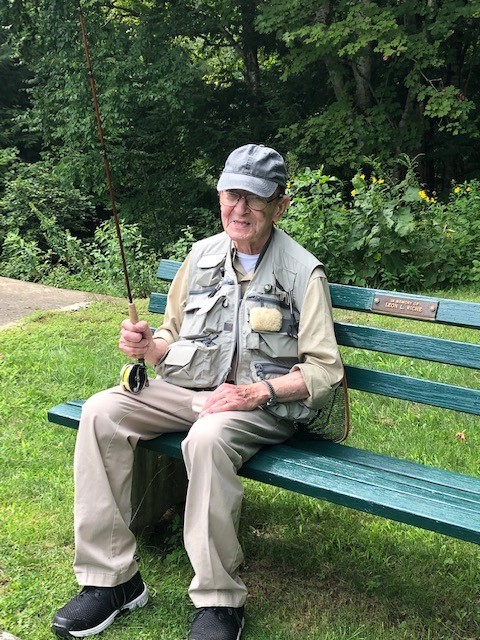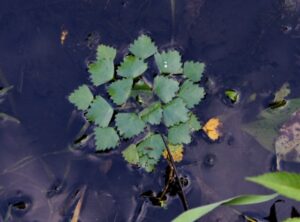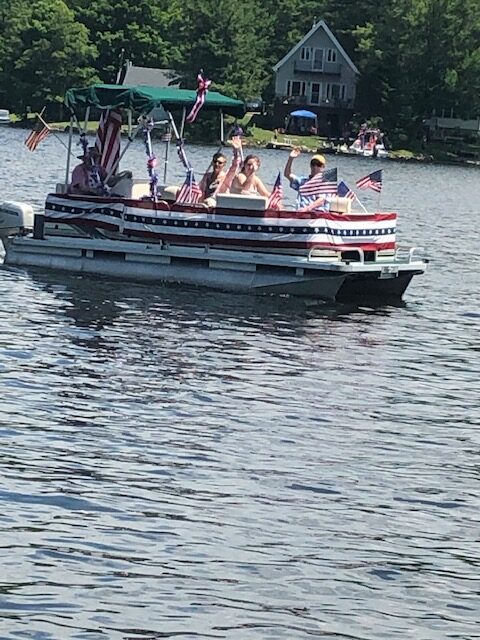In the summer of 2018, I received an email from Fred Moran of Adams. In the email message he wrote that he would like me to take him to fish the Housatonic River. Of course, I jumped at the opportunity to fish with this local flyfishing legend.
Fred was a teacher and principal in the Central Regional School District for twenty-five years. Fred also is the well-known elder statesman of fly fishermen in Berkshire County. He has been a local fly-fishing guide, owned a flyfishing shop in Adams, taught flyfishing courses, restored antique bamboo fly rods, and did some fly tying. I have known Fred and his wife Marilyn for quite a long time through our affiliations with Trout Unlimited chapters. Incidentally, Marilyn is also an excellent flyfisher and has assisted Fred in guiding. Some readers may remember her as a key local person in the Casting for Recovery organization. Fred’s three sons also fllyfish. I hadn’t heard from them for quite some time.
Conflicting schedules, high water conditions and a lot of obstacles prevented us from going fishing that year. In 2019, I contacted Fred again and for health reasons, water conditions, etc., we couldn’t go at all that year either. Earlier in this year I contacted Fred once more and he said that he couldn’t go fishing for a while due to surgery he had on his foot. He said that he would have to practically learn how to walk all over again., much less handle slippery rocks, river currents, etc. Maybe later this year.
Oh no, that didn’t sound good. Not only that, but Fred is getting older and may not be able to go fly-fishing anymore. (Subsequently, I learned that we are the same age ……he’s not really that old after all.)
About a month ago, I contacted Fred’s son, Kevin, and asked him if he thought that Fred would ever be able to go fly-fishing again. I didn’t want to make Fred feel badly by constantly asking him if he can go when, in reality, he might not be able. Kevin said that he recently tried taking him to fish the Deerfield, Swift and other rivers but due to his foot condition and the steep banks and stairs that have to be navigated, he couldn’t get him to the water. I suggested that perhaps he could fish some private waters that I know of where we could practically drive up to the water and fish from the banks. Kevin was going to see if Fred was interested and when he got back to me, I was delighted to hear that Fred was looking forward to it.
Now it was a matter of logistics. Not being a member of that club, I prevailed upon two members of the ROMEOs (Retired Old Men Eating Out) who were also members of the private club to allow us access to the water. They were happy to accommodate us and wanted to be there to see Fred again.
While making plans with Fred, we decided to bring along some “friendly spirits” with us. We both possessed bamboo (cane) rods that were made by the late legendary bamboo flyrod maker Francis “Digger” Degere of Adams. Digger passed beyond the riverbend in 1999 but his rod making fame lives on nationally. (perhaps a future article on him in this column?) For a while Fred assisted Digger in the making of bamboo fly rods.
When I arrived at Fred’s place, there he was waiting at the end of his driveway. Off we went motoring down the road, two 77-year olders going fishing like a couple of youngsters. Our bodies have acquired a few dings, dents, and additions and lost a few parts over the years, but we are still on this side of the riverbend and anxious to catch a few more trout before we get there.
Upon arrival at the private club, we were met by fellow fly-fishing ROMEOs Ron Smith of Pittsfield, retired Dr. Richard Greene of Tyringham, Paul Knauth of Hinsdale and Bob Baumann of Lenox, all fly-fishermen. There was no way they would miss this event. We had one goal, that being to enable Fred to experience the thrill of once again casting a fly with the flyrod that his good friend Digger Degere made and, good Lord willing, to catch a trout.
Our group separated with Fred and I going downstream to fish off a dam while Ron and Bob fished upstream around a bend. Paul didn’t fish this day but acted as our gilly (Usually a Scottish attendant or guide for fishing) even though he is not Scottish. He carried a beautiful long handled wooden net that Dr. Greene had made during his retirement. He also didn’t fish that day but preferred to watch the master.
When we assembled our rods and reels, I was surprised to see that in addition to our rare Degere rods, we both were using classic Bill Ballan reels. They were not massed produced but individually hand crafted by Bill Balland himself. Fred actually met Balland at a fly-fishing show who, after having a nice conversation, suggested that Fred buy one of his reels. “Darned if I didn’t” said Fred. My reel, and Degere’s rod, were given to me by the family of the late Tony Lorio. Tony and I were close friends who fished together in several Canadian provinces and the family felt that Tony would want me to have them.
Fred and I didn’t do well at all. Fred caught a couple of small sunfish. It was getting near lunch time and after having a photo op, we walked back to the vehicles to get our sandwiches and find a shady spot to eat. When Ron joined us, he said that he had some luck, having caught one trout and hooking a couple more. Well, we were there to fish, not to eat, so we delayed our lunch and went to the spot that Ron had mentioned. When we got there, trout were rising and splashing apparently chasing some kind of an emerging fly.
Because of Fred’s foot/leg condition, it was uncomfortable for him to stand very long so he sat on a small stool and cast from the bank. I was a short distance from him and managed to hook a couple of trout but both were able to shake my barbless fly. We insisted that Fred move and try fishing there. Fred put on a bead-headed nymph and after some perfectly executed fly casts, he was into a nice trout. The trout did its darndest to shake Fred’s fly, but to no avail and Paul ultimately netted it with the wooden net.
Fred didn’t see it, but after the fish was landed and released, there was a series of hand pumps by the guys. We were elated that Fred caught that nice 12-inch rainbow trout, perhaps more excited than Fred himself.
Now we could finally eat lunch. After that, we went back to see if Fred could catch another one, but the fish had stopped feeding. The time was not wasted though, as Fred shook off the rust and was casting even better, with beautiful tight loops. He was delicately laying the fly out at least 30 feet, all while sitting on the stool. Truly, fly casting is an art form, and Fred was a master at it.
Finally, it was time to go home. You couldn’t find two happier guys than us on the way back. We agreed that old Digger was probably smiling down on us as we were putting his beautiful rods to use more than 50 years after his making them. I didn’t say it then, but I’ll bet he was especially happy to see his old friend Fred haul in that nice trout using his rod.
I recently received an email from Fred thanking me and the ROMEOs for providing him with a day “he will remember for a long time.” Of course, the pleasure was all ours. He also tacked onto the message, “Hopefully, when I get my legs back to working, we can share a fishing day that will concentrate on the fishing only.” Let’s hope so Fred.
















